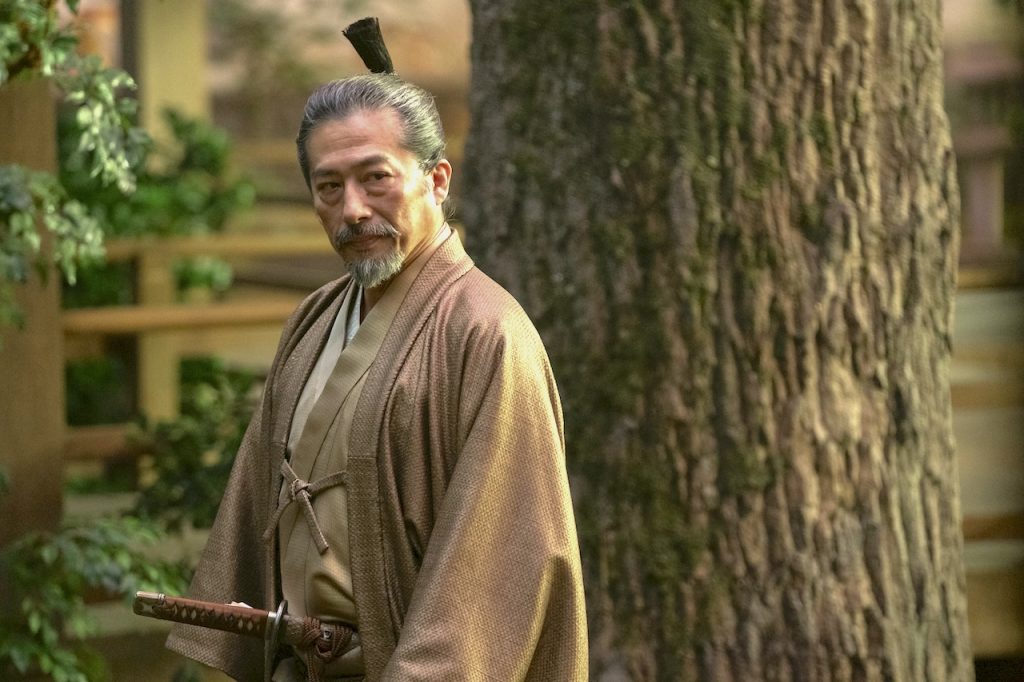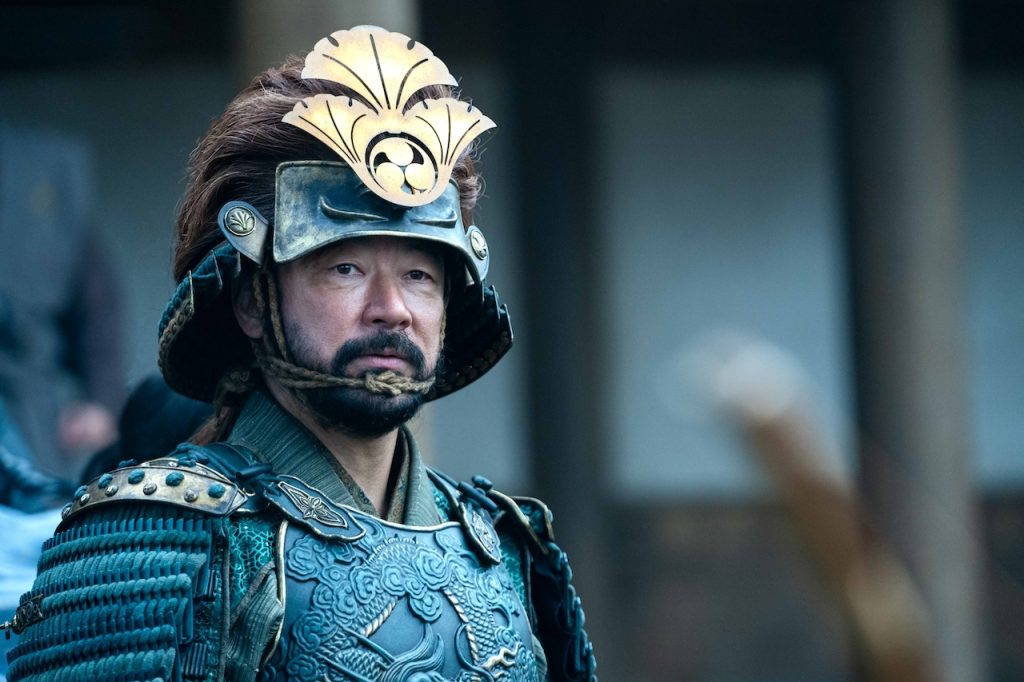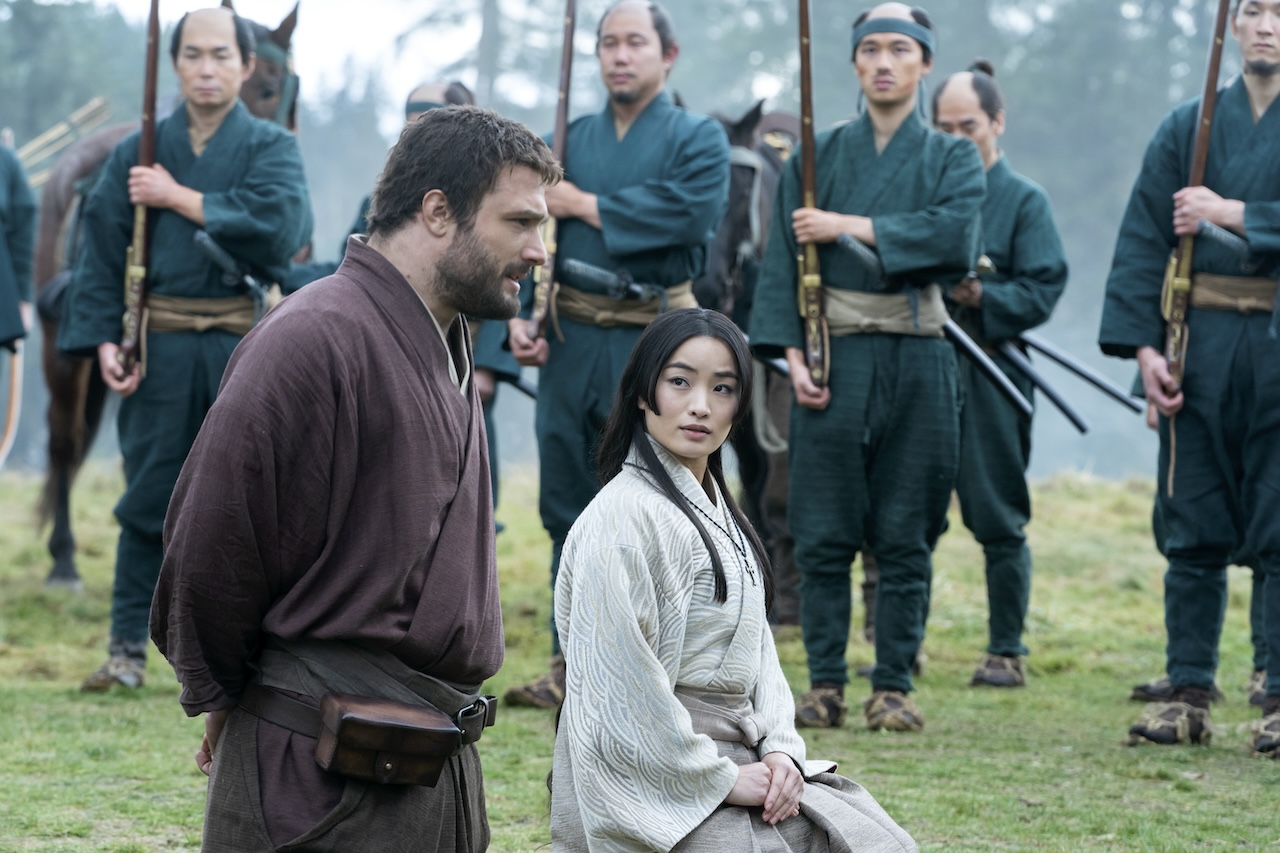- Justin Marks & Rachel Kondo Discuss Their Stunning Adaptation Of “Shogun” (Part 1)
- Justin Marks & Rachel Kondo Discuss Their Stunning Adaptation Of “Shogun” (Part 2)
The Role Of Religion
Continuing on the theme of the clash between Eastern and Western values, the predominant religions in Japan were Buddhism and Shintoism butting up against European Christianity.
Rachel Kondo mentions that she came from a family of missionaries who travelled around the world and settled in Hawaii. Religion is one of the more complicated thematic aspects of Shogun. “I’ve always been curious about the impulse to bring a set of beliefs that matter so profoundly to you, that you would give your life to be able to express it, and to pass it along.”
She read Shūsaku Endō’s book Silence about two Portuguese Jesuit priests who travel to Japan to spread Catholicism. It was later adapted into a film and directed by Martin Scorsese. This formed part of Blackthorne’s character as he was exposed to a blend of faiths.
“We have characters in Shogun in the form of Father Alvito (Tommy Bastow) who is a true believer. Then there are those like Busho Lord Kiyama (Hiromoto Ida) who understand that the Christian faith is a tool he can use in order to secure his ambitions.” Shogun deftly illustrates the use and misuse of religion. The reality is that religion has many truths and predominantly following one doesn’t preclude you from appreciating aspects of another.
The showrunners also wanted to look at religion through the lens of agency.
“Mariko is someone whose faith splits her into two when it comes to an identity that is Japanese traditionally, and another identity as a Christian convert. Seeing the story through her eyes gets us closer to this idea that one can be many things at once. One does not have to define themselves by their faith, and one can take a faith, but also possess a separate political identity as well,” elaborates Marks.
Adaptation Shogun
The 1980 TV series is mainly told through John Blackthorne’s perspective within an ensemble of characters. Kondo and Marks’ adaptation braided together the perspectives of three core characters to enrich their main story.

Yoshii Toranaga (Hiroyuki Sanada) Photo by Katie Yu/ FX
“We were delighted to see how multi-dimensional the book was, but how it always returned to this three-pronged approach of Blackthorne, Mariko, and Toranaga,” says Kondo. “We did the work simply of bringing that back into the narrative of the show. It was really just a question of restoring what the book had already done.”
Justin Marks adds that there are times when the novel wonders off along one character’s point of view which they couldn’t be fully capture in the time constraints of a limited series.
“In a writers’ room, you want to find what you’re going to use as your gaze, your lens. Then you leave yourself open to falling in love with the surprises and the characters who emerge over the course of the process. I think Kashigi Yabushige (Tadanobu Asano) really took over our imaginations, not just as a traditional villain, but as an untrustworthy ally, which made him more dangerous and more fun,” states Marks.
“Usami Fuji (Moeka Hoshi) really broke our hearts in the book at the very beginning. She was so crucial to the dynamic between Mariko and Blackthorne.”
“We really embraced Kashigi Omi (Hiroto Kanai), Yoshii Nagakado (Yuki Kura), Toranaga’s son, as well as Hiromatsu Kosho (Jaden Konishi), and ultimately, the Lady Gin (Yûko Miyamoto) and Lady Ochiba No Kata (Fumi Nikaidô). You let these characters spark your interest and pull you away,” he recalls.
Lady Ochiba’s prominence in the story was also elevated during the adaptation process. Kondo and Marks raised her level of danger as they began to understand her motivations better.
The Writers’ Room
Justin Marks describes the writers’ room as his “happy place.” It’s a “core family of voices who bring the essence of themselves to the story, and then create something that we could never do on our own.”
“Rachel I came into it and then hired Shannon Goss co-executive producer, who is of the voice of experience to help with the room. Matt Lambert consulting producer came to us through some friends. You also have Megan Wong who I had worked with on my last show, and Emily Yoshida, who was new to the process, but came with a really great grasp of the book.”

Kashigi Yabushige (Tadanobu Asano) Photo by Katie Yu/ FX
“We all started for a couple weeks talking about what we liked about the book, what were our favorite scenes, and what were the sequences that felt harder to translate to television,” he mentions.
Once these elements were determined, the writers could begin extracting what they needed from the book. One sequence from the book that was heavily edited was Blackthorne at sea at the beginning so that their TV series could start in Japan early on.
Another sequence that was cut back was when Blackthorne and Mariko are falling in love in the book. It felt like a road trip. Eventually, it was consolidated into a montage.
“The best part about being in a writers’ room is the excitement of what gets one writer going is information for the other writer. It was my first writers’ room and it really is this special family setup where you do this impossible task of bringing this book into screenplay form, and it you have to have sharp minds to do it with you,” adds Kondo.
The Parallels Of Shogun To Today
“There are a lot of ways that Shogun can be seen as a template for intersectionality today, This idea of that none of us are really defined by one thing culturally-speaking. I don’t think we want to of put ourselves into any one box, and it’s amazing how Shogun continues to defy your understanding of agenda, culture, religion, and forces its main characters to humble themselves,” muses Marks. “I think that idea of humility and curiosity is something that we really could use more of today.”
“The novel was released in 1975, and decades later, it’s still asking the same questions through a different lens,” says Kondo.
“I also think that when we talk about why a story appeals for years, it’s timeless. There’s something about this that is so classical and structured, that I feel like from a modern lens, I want more of it in these great throwback adventures. It doesn’t mean that we have to turn our back to the way our culture has moved. In fact, we can use that to better it.”
“Shogun is about intrigue, it’s about politics, it’s a love story. It’s a story about someone who loses themselves and then finds themselves again, and I think we all want that out of our stories,” concludes Marks. No matter how tumultuous the world is today, cross-cultural pollination will help us better understand ourselves and each other.
